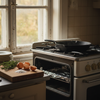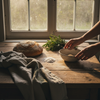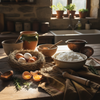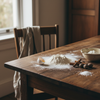Accurate Stainless Steel Measuring Cups: Ultimate Guide
Key Takeaways
- Accurate stainless steel measuring cups are essential for achieving consistent cooking results.
- Precision in measurement distinguishes successful recipes from kitchen failures.
- Using reliable measuring tools can elevate your cooking from experimental to exceptional.
- Traditional recipes often rely on precise measurements for perfect outcomes.
Table of Contents
- Unleashing Kitchen Precision: Why Your Measuring Cups Matter More Than You Think
- The Anatomy of Stainless Steel Measuring Cups
- Why Accuracy in Measuring Cups is a Game-Changer
- Understanding Key Features of Accurate Stainless Steel Measuring Cups
- Choosing the Best Accurate Stainless Steel Measuring Cups for Your Kitchen
- The Maintenance Manual: Keeping Your Measuring Cups Precise for Life
- Stainless Steel Measuring Cups vs. The World: Compare & Contrast
Unleashing Kitchen Precision: Why Your Measuring Cups Matter More Than You Think
Ever wondered why your grandmother's pound cake turned out perfect every single time, while yours sometimes resembles a science experiment gone wrong? Here's the not-so-secret ingredient: accurate stainless steel measuring cups. While creativity and passion fuel great cooking, precision is what separates kitchen disasters from culinary triumphs.
At DI ORO, we believe that every home chef deserves tools that perform as boldly as their imagination. Whether you're tackling your first soufflé or perfecting that holiday roast that'll have the family talking until next year, the right measuring tools transform "what if" into "what's next." Our award-winning kitchen tools have earned recognition from America's Test Kitchen and Food Network because we understand that precision and safety aren't negotiable, they're the foundation of fearless cooking.
For those looking to upgrade, 4-piece 18/8 stainless steel measuring cup set offers the accuracy and durability needed for consistent results.
The Bottom Line: Accurate measuring isn't about being fussy, it's about achieving consistent, repeatable results that let your creativity shine without the guesswork.
The Anatomy of Stainless Steel Measuring Cups

What Are Stainless Steel Measuring Cups?
Stainless steel measuring cups are precision-engineered kitchen tools designed primarily for measuring dry ingredients like flour, sugar, nuts, and spices. Unlike their liquid-measuring cousins (those glass or plastic cups with spouts), dry measuring cups are built with flat rims that allow you to level ingredients for exact measurements.
A standard set typically includes four essential sizes: ¼ cup, ⅓ cup, ½ cup, and 1 cup. Premium sets often expand this range with additional sizes like ⅛ cup, ⅔ cup, ¾ cup, and even 1½ or 2-cup options for larger recipes or batch cooking.
Key Components of Quality Measuring Cups:
- Bowl: The measuring chamber with precise volume calibration
- Handle: Ergonomically designed for comfortable grip and control
- Rim: Flat edge that enables accurate leveling of ingredients
- Markings: Volume indicators that should be engraved, not printed
- Base: Flat bottom for stable scooping and measuring
Why Stainless Steel? The Material That Changes Everything
When it comes to measuring accuracy and kitchen safety, not all materials are created equal. Stainless steel measuring cups represent the gold standard for serious home chefs, and here's why they outperform every alternative:
Stainless Steel Advantages
- Forever-chemical free construction ensures food safety
- Resistance to rust, dents, and warping maintains accuracy over time
- Dishwasher-safe durability that won't degrade with repeated washing
- Professional-grade performance suitable for any skill level
- Non-porous surface prevents bacteria buildup and odor retention
- Temperature resistance handles both hot and cold ingredients
Considerations
- Higher upfront investment compared to plastic alternatives
- Slightly heavier than plastic options
- Can be noisy when nested or stored together
Compare this to plastic measuring cups that can warp, absorb odors, and potentially leach chemicals into your ingredients, or glass options that, while accurate, carry the constant risk of breakage. Ceramic cups look beautiful but can chip and crack, compromising both safety and precision.
For a comprehensive solution, consider the 8-piece 18/8 stainless steel measuring cup and spoon set that covers all your measuring needs in one package.
Material Matters: The 18/8 (304) Grade Explained
Not all stainless steel is created equal, and when it comes to best measuring cups, the grade matters significantly. The gold standard for kitchen tools is 18/8 stainless steel, also known as 304-grade stainless steel.
18/8 Stainless Steel Breakdown:
- 18% Chromium: Provides corrosion resistance and durability
- 8% Nickel: Adds strength and maintains the polished finish
- Food-Safe Certification: Meets FDA standards for direct food contact
- Non-Reactive Surface: Won't interact with acidic ingredients like lemon juice or tomatoes
You might also encounter 18/10 stainless steel (with 10% nickel instead of 8%), which offers slightly enhanced corrosion resistance and a more lustrous finish. However, for measuring cups, 18/8 provides all the durability and safety you need at a more accessible price point.
Why Accuracy in Measuring Cups is a Game-Changer
Baking: Where Precision Equals Perfection
Baking isn't just cooking, it's edible chemistry. When you're creating macarons, sourdough bread, or that show-stopping layer cake, even small measurement inaccuracies can mean the difference between Instagram-worthy results and kitchen catastrophe.
Consider this: just 10% too much flour in your cake batter can result in a dense, dry texture that no amount of frosting can save. Too little, and your cake might collapse or have a gummy consistency. The chemistry of baking relies on precise ratios of proteins, starches, fats, and leavening agents working in perfect harmony.
Professional Baker's Insight: "In professional kitchens, we measure ingredients by weight for ultimate precision. But for home bakers using volume measurements, having cups that are calibrated to exact standards is absolutely critical. A 'cup' that's actually 15% larger than standard can ruin an entire batch."
Delicate baked goods like macarons, croissants, and artisan breads are particularly unforgiving. These recipes have been developed and tested using standardized measurements, and any deviation from those precise ratios affects the final texture, rise, and flavor.
For more tips on perfecting your baking, check out our sourdough starter recipe for hands-on experience with precision in action.
Cooking: Trust Your Inner Chef (but Use the Right Tools)
While cooking often allows for more improvisation than baking, certain recipes demand precision. Soufflés, béarnaise sauce, and risotto all require exact ingredient ratios to achieve their signature textures and flavors. When your hollandaise breaks or your soufflé deflates, inaccurate measurements are often the culprit lurking behind kitchen disasters.
Think of accurate stainless steel measuring cups as your culinary insurance policy. They eliminate the guesswork that can turn a promising dinner party into a takeout emergency. Whether you're scaling a recipe up for a crowd or down for an intimate meal, precision tools ensure your results stay consistent every single time.
How Measuring Cup Accuracy is Tested and Certified
Not all measuring cups are created equal, and the difference isn't just about price. Professional testing labs use NIST (National Institute of Standards and Technology) volume standards to evaluate accuracy. The best measuring cups maintain tolerances within 1-2% of stated volume, while cheaper alternatives can be off by 10% or more.
Key Fact: America's Test Kitchen tests measuring cups by filling them with water and weighing the results on precision scales. A true 1-cup measure should hold exactly 236.6 milliliters of water.
Industry testing also evaluates durability, how well markings hold up after repeated dishwasher cycles, whether handles stay secure under stress, and if the cups maintain their shape over time. This rigorous evaluation separates the weekend warriors from the forever tools.
Understanding Key Features of Accurate Stainless Steel Measuring Cups

Engraved vs. Printed Measurement Markings
Here's where the wheat separates from the chaff: measurement markings that disappear after six months versus ones that outlast your mortgage. Engraved or embossed markings are laser-etched or stamped directly into the stainless steel, creating permanent indentations that won't fade, chip, or wash away.
Printed markings might look crisp initially, but they're essentially stickers that gradually surrender to dishwasher detergent and daily use. Within a year, you'll find yourself squinting at ghost markings, trying to determine if that faded line represents ½ cup or ¾ cup.
Pro Tip: Run your finger across the markings. If you can feel the depth of the numbers and lines, they're likely engraved and built to last.
Handle Design and Construction
The handle might seem like an afterthought, but it's actually the stress point that determines whether your measuring cups survive a decade of daily use or snap during your next batch of cookies. One-piece construction, where the handle and bowl are formed from a single piece of steel, offers superior strength compared to welded handles that can separate under pressure.
Handle length matters too, especially for deeper ingredients containers. Longer handles keep your knuckles out of flour bins, while ergonomic curves reduce hand fatigue during marathon baking sessions. Look for handles with subtle texturing or ridges that provide secure grip even when your hands are wet or floury.
Interiors: Flat vs. Rounded Bottoms
The interior shape affects both measuring accuracy and ingredient release. Flat-bottomed cups sit stable on counters for precise leveling and make it easier to scrape out every last bit of sticky ingredients like peanut butter or honey. The sharp corner where the flat bottom meets the sides creates a clean edge for your leveling tool.
Rounded bottoms, while easier to clean, can make leveling trickier and may not release thick ingredients as completely. However, they do excel at mixing small amounts of ingredients directly in the cup, perfect for combining spices or creating quick marinades.
Measurement Markings: US, Metric, or Both?
Dual markings transform your measuring cups into international translators, seamlessly switching between American recipes calling for cups and European recipes specifying milliliters. Quality sets include both US customary (¼, ⅓, ½, 1 cup) and metric measurements (60ml, 80ml, 125ml, 250ml) etched clearly on each cup.
When shopping for measuring cups, verify that metric conversions are accurate, some imported sets use approximate rather than precise conversions, which can throw off your results.
Choosing the Best Accurate Stainless Steel Measuring Cups for Your Kitchen
Essential Criteria for Selection
Smart measuring cup selection starts with understanding your non-negotiables. Accuracy tops the list, look for sets that meet or exceed NIST standards and have been tested by reputable culinary organizations. Construction quality follows closely: 18/8 (304) stainless steel provides the ideal balance of durability, safety, and corrosion resistance.
Forever-chemical-free construction isn't just a health buzzword, it's essential for tools that directly contact your food. Quality stainless steel naturally resists bacteria and won't leach harmful chemicals, even when measuring acidic ingredients like lemon juice or tomato sauce.
Quick Selection Checklist:
- Engraved measurements (not printed)
- 18/8 stainless steel construction
- One-piece handle design
- Flat bottoms for accurate leveling
- Nesting design for compact storage
- Dishwasher-safe certification
DI ORO Stainless Steel Measuring Cups - Best Overall
Best for: Home chefs who demand professional-grade accuracy and durability
Rating: 5/5 stars
DI ORO's stainless steel measuring cups represent the gold standard in kitchen precision tools. Crafted from premium 18/8 stainless steel with deeply engraved markings that will never fade, these cups deliver the accuracy that earned DI ORO recognition from America's Test Kitchen and Food Network.
The one-piece construction eliminates weak points, while the ergonomic handles provide comfortable grip during extended baking sessions. Each cup features both US and metric measurements, making them perfect for international recipes. The flat bottoms ensure accurate leveling, and the polished interior releases even sticky ingredients completely.
If you want to expand your kitchen toolkit, our award winning kitchen utensils collection features more tools for precision cooking.
Pros
- Award-winning accuracy verified by professional testing
- Forever-chemical-free 18/8 stainless steel construction
- Deeply engraved markings that never fade
- One-piece design eliminates handle failure points
- Dual US/metric measurements
- Dishwasher safe with lifetime durability
Cons
- Premium pricing reflects professional-grade quality
- May feel heavier than plastic alternatives
Budget-Friendly Stainless Steel Measuring Cups - Best Budget Option
Best for: Cost-conscious cooks seeking reliable basic functionality
Rating: 3.5/5 stars
Budget-friendly stainless steel measuring cups deliver solid performance at an accessible price point. The 18/8 stainless steel construction provides durability without the premium cost, while comfortable non-slip handles make measuring easier for cooks with grip concerns. The engraved measurements are clear and permanent, though not as deeply etched as higher-end options.
Pros
- Excellent value for money
- Ergonomic non-slip handles
- Dishwasher safe construction
- Accurate measurements for everyday cooking
Cons
- Handles can collect food particles
- Less precise than professional-grade options
- Limited size options in standard sets
Professional-Grade Stainless Steel Measuring Cups - Professional Choice
Best for: Professional kitchens and serious home chefs
Rating: 4.5/5 stars
Professional-grade measuring cups bring exceptional results to the kitchen. These cups feature restaurant-quality 18/10 stainless steel construction with deeply engraved measurements that remain crisp after years of heavy use. The balanced weight distribution and reinforced handles make them ideal for high-volume cooking environments.
The precision engineering ensures consistent accuracy across all sizes, making them particularly valuable for professional baking where even minor measurement variations can affect outcomes. While the investment is substantial, these cups often outlast multiple sets of less durable alternatives.
Comprehensive Value Set - Best Value Set
Best for: Home bakers wanting comprehensive size options
Rating: 4/5 stars
Comprehensive value sets offer an impressive range of sizes, including uncommon but useful options like ⅛ cup and ⅔ cup. The 18/8 stainless steel construction provides excellent durability, while the laser-etched measurements resist fading even after thousands of dishwasher cycles. The flat bottoms make leveling ingredients effortless, and the long handles provide comfortable grip during extended baking sessions.
This set particularly excels for recipe scaling and international cooking, where metric conversions and unusual measurements frequently appear. The nesting design saves valuable drawer space while keeping all sizes organized and accessible.
For a deeper dive into how measuring cups compare, see this in-depth guide on measuring cups from King Arthur Baking.
The Maintenance Manual: Keeping Your Measuring Cups Precise for Life

Your investment in quality accurate stainless steel measuring cups deserves proper care to maintain precision and extend lifespan. Here's how to keep your tools performing like new for decades.
Cleaning Best Practices
Stainless steel measuring cups thrive with proper cleaning techniques. While most quality sets are dishwasher safe, hand washing extends their lifespan and maintains measurement accuracy. Use warm soapy water and avoid abrasive scrubbers that can scratch the surface or damage engraved markings.
Pro Tip: For sticky ingredients like honey or peanut butter, rinse cups with hot water immediately after use. This prevents residue from hardening and makes cleaning effortless.
When using the dishwasher, place cups on the top rack to avoid exposure to the heating element. The high temperatures can cause warping in lower-quality sets, though premium 18/8 stainless steel typically withstands standard dishwasher cycles without issue.
For stubborn stains or discoloration, create a paste using baking soda and water. This natural cleaning method removes marks without chemicals that could affect food safety. Avoid bleach or harsh chemicals that can compromise the stainless steel finish.
Proper Storage for Longevity and Convenience
Smart storage prevents damage while keeping your dry measuring cups easily accessible. Nesting cups should align properly to prevent scratching and maintain their shape. Misaligned storage can cause subtle warping that affects measurement accuracy over time.
Ring-connected sets offer convenient hanging storage but require adequate cabinet space. Magnetic strips provide modern storage solutions, though ensure the magnets don't interfere with any electronic kitchen scales nearby. Drawer storage works well when cups nest completely and won't shift during opening and closing.
"The best storage system is the one you'll actually use consistently. Whether hanging, nesting, or drawer storage, choose the method that keeps your measuring cups most accessible for your cooking style." - Professional Kitchen Design Expert
What to Do If... Problem & Solution Section
Markings fade or become difficult to read: Quality engraved markings shouldn't fade, but if they do, it indicates lower-grade manufacturing. Unfortunately, markings cannot be restored, making this a replacement situation. This highlights why investing in deeply engraved cups pays off long-term.
Cup gets bent or dented: Minor dents rarely affect measurement accuracy, but bent rims can prevent proper leveling. Professional kitchen supply stores sometimes offer repair services for premium sets, though replacement often proves more cost-effective.
Inconsistent measurements between cups: This suggests manufacturing defects or damage. Test suspected cups using a kitchen scale and water to verify accuracy. Cups showing consistent deviation should be replaced to maintain recipe reliability.
Stainless Steel Measuring Cups vs. The World: Compare & Contrast
Stainless Steel vs. Plastic Measuring Cups
The choice between stainless steel and plastic measuring cups involves significant trade-offs in durability, safety, and performance. Stainless steel measuring cups offer superior longevity, often lasting decades with proper care, while plastic alternatives typically require replacement every few years due to cracking, staining, and measurement markings wearing off.
From a health perspective, stainless steel provides peace of mind with its forever-chemical-free composition. Plastic cups, especially older models, may contain BPA or other chemicals that can leach into food over time. The non-porous surface of stainless steel also resists bacteria and odor absorption, making it more hygienic for long-term use.
However, plastic cups offer advantages in specific situations. They're lighter for users with mobility issues, won't shatter if dropped, and typically cost less initially. For occasional bakers or budget-conscious cooks, quality plastic sets can provide adequate performance.
For more on kitchen essentials, explore our bundles & sets for curated tool combinations.
Stainless Steel vs. Glass Measuring Cups
Glass measuring cups excel for liquid measurements with their clear visibility and pour spouts, but they serve different purposes than dry measuring cups. Stainless steel cups provide superior durability for dry ingredient measurement, while glass cups offer precision for liquids where you need to read measurements at eye level.
The breakage factor significantly increases with glass, making stainless steel a safer and more durable choice for everyday use, especially in busy kitchens or when cooking with kids.
For a broader overview of top-rated measuring tools, see this comprehensive guide to measuring cups and spoons from Cookware Junkies.
Looking for more inspiration? Try our chocolate rose petal date bites recipe for a delicious way to put your measuring skills to the test.
Frequently Asked Questions
What is the best material for measuring cups?
The best material for measuring cups is stainless steel because it offers durability, resistance to rust and stains, and maintains accuracy over time without warping. Unlike plastic, stainless steel won’t absorb odors or colors from ingredients, making it a reliable and hygienic choice for both dry and liquid measurements.
Is stainless steel measuring cup better than plastic?
Yes, stainless steel measuring cups outperform plastic ones in several ways. They are sturdier, more precise, and heat-resistant, which means they don’t deform or degrade with use. Plus, stainless steel is non-porous and free of harmful chemicals, so it keeps your ingredients pure and your measurements spot-on every time.
What is the most accurate liquid measuring device?
The most accurate liquid measuring device is a clear glass or BPA-free plastic liquid measuring cup with a pour spout and precise, easy-to-read markings. These cups allow you to measure liquids at eye level for exact amounts, minimizing errors caused by meniscus reading, which is crucial for recipes where every drop counts.
Do professional chefs use measuring cups?
Professional chefs definitely use measuring cups, especially when precision is key, like in baking or crafting complex sauces. While experienced cooks often eyeball measurements for everyday cooking, accurate measuring tools ensure consistent results and help maintain quality, making stainless steel measuring cups a staple in pro kitchens.
What is the best metal for cups?
Stainless steel is the best metal for cups due to its strength, corrosion resistance, and non-reactive nature, which means it won’t alter the taste or safety of your food and drinks. It’s easy to clean, long-lasting, and maintains its sleek appearance, making it the go-to choice for both measuring cups and everyday drinkware.




